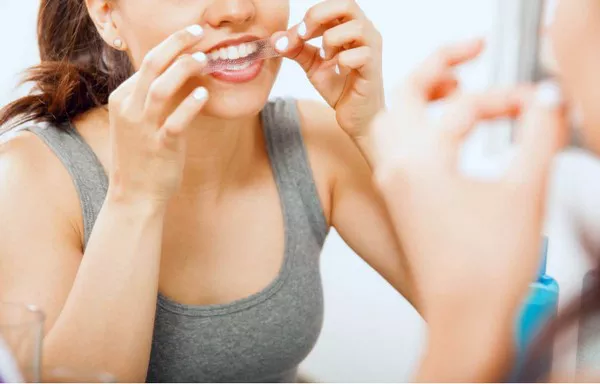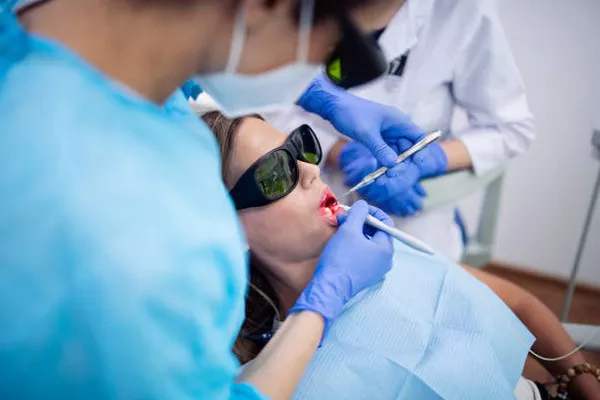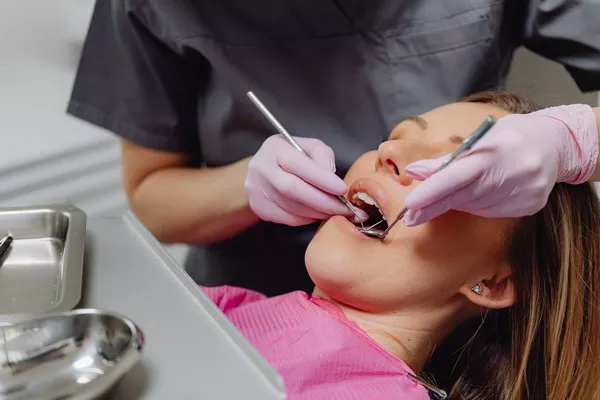Teeth whitening has become a popular cosmetic dental procedure aimed at enhancing the appearance of one’s smile. Among the various methods available, whitening strips are a convenient and effective option that many people use. However, there are several considerations to keep in mind to ensure the best results, including whether to brush your teeth before applying the strips. This article will provide a comprehensive guide on the use of whitening strips, covering everything from their mechanism to best practices for brushing before and after application, as well as tips for managing sensitivity.
What Are Whitening Strips?
Whitening strips are thin, flexible pieces of plastic coated with a whitening gel that contains bleaching agents. These strips are designed to conform to the shape of your teeth and deliver a consistent and uniform application of the whitening gel. The active ingredients in the gel are typically hydrogen peroxide or carbamide peroxide, both of which are effective in breaking down stains on the enamel surface of the teeth.
Hydrogen Peroxide: This is a common bleaching agent used in many whitening products. It works by penetrating the enamel and breaking down the compounds that cause discoloration. Hydrogen peroxide is known for its rapid action and is often used in professional whitening treatments as well.
Carbamide Peroxide: This compound breaks down into hydrogen peroxide and urea when applied to the teeth. It acts more slowly than hydrogen peroxide, making it a suitable option for at-home whitening kits as it poses a lower risk of sensitivity.
The way whitening strips work is straightforward: you apply them to your teeth and leave them in place for the duration specified by the manufacturer, usually ranging from 20 to 60 minutes. During this time, the bleaching agents penetrate the enamel and break down the molecules responsible for stains, resulting in a whiter, brighter smile over a period of consistent use.
Brushing Before Whitening
Brushing your teeth before applying whitening strips is highly recommended for several reasons. Proper brushing ensures that your teeth are clean and free of debris, which can enhance the effectiveness of the whitening treatment.
Removing Plaque: Plaque is a sticky film of bacteria that forms on your teeth and can inhibit the adhesion of whitening strips. By brushing your teeth beforehand, you remove this layer, allowing the strips to make better contact with the enamel surface. This maximizes the exposure of your teeth to the whitening agents, leading to more effective and uniform results.
Avoiding Trapping Debris: If you apply whitening strips to unbrushed teeth, food particles and other debris can become trapped under the strips. This not only reduces the efficacy of the treatment but can also lead to increased risk of dental issues such as decay or gum irritation. Ensuring your teeth are clean before application helps prevent these problems.
However, it’s important to brush gently and with a soft-bristled toothbrush to avoid irritating your gums, which can become more sensitive when exposed to the bleaching agents in whitening strips.
Timing of Brushing
While brushing before applying whitening strips is beneficial, the timing of brushing is crucial to avoid potential gum irritation. It’s advisable to wait for about 30 minutes after brushing before applying the strips.
Preventing Gum Irritation: Brushing can temporarily soften your gum tissue, making it more susceptible to irritation from the peroxide in the whitening strips. Waiting for half an hour allows your gums to recover from the mechanical action of brushing and minimizes the risk of irritation or discomfort.
Ensuring Optimal Adhesion: If you apply the strips immediately after brushing, there might still be residual toothpaste or moisture on your teeth, which can interfere with the adhesion of the strips. Giving your teeth a bit of time to air dry ensures that the strips stick properly and the whitening agents work more effectively.
Brushing After Whitening
After removing whitening strips, it’s a good idea to brush your teeth, but there are certain considerations to keep in mind.
Pros of Brushing After Whitening
Removal of Residual Gel: Whitening strips can leave behind a gel residue on your teeth. Brushing after use helps remove this leftover gel, ensuring your mouth feels clean and fresh.
Preventing Staining: Brushing can help remove any dislodged surface stains that were lifted by the whitening process, contributing to a more polished final result.
Cons of Brushing After Whitening
Tooth Sensitivity: Your teeth may be more sensitive immediately after using whitening strips. Brushing right away, especially with a hard-bristled toothbrush or abrasive toothpaste, can exacerbate this sensitivity. It’s best to use a toothpaste formulated for sensitive teeth and a soft-bristled brush.
Gum Irritation: Similar to the pre-whitening phase, your gums may be slightly irritated from the bleaching agents. Brushing too soon after removing the strips can increase this irritation.
To mitigate these issues, consider waiting a short period after removing the strips before brushing. Rinsing your mouth with water immediately after removing the strips can help remove most of the gel residue and reduce the need for immediate brushing.
see also: Do white strips damage teeth?
Sensitivity Issues
Teeth sensitivity is a common side effect associated with the use of whitening strips. Understanding how to manage and minimize discomfort can make the whitening process more pleasant and effective.
Causes of Sensitivity: The active ingredients in whitening strips, such as hydrogen peroxide, penetrate the enamel to bleach the underlying dentin. This can temporarily increase tooth sensitivity to temperature changes and pressure.
Tips to Minimize Sensitivity
Use Sensitivity Toothpaste: Special toothpastes formulated for sensitive teeth contain compounds like potassium nitrate or stannous fluoride, which help to block the transmission of pain signals from the tooth surface to the nerves.
Limit Use: If you experience significant sensitivity, try using the whitening strips less frequently. For instance, instead of daily applications, switch to every other day.
Shorter Application Time: Reduce the duration for which you wear the strips. If the recommended time is 30 minutes, try reducing it to 15-20 minutes and gradually increase as your teeth adjust.
Consult a Dentist: If sensitivity persists, consult your dentist. They might recommend alternative whitening methods or products specifically designed for sensitive teeth.
Manufacturer Instructions
One of the most crucial aspects of using whitening strips effectively and safely is adhering to the manufacturer’s instructions. Each brand may have specific guidelines regarding application time, frequency, and additional care instructions.
Importance of Following Instructions
Maximizing Effectiveness: Manufacturers conduct extensive research to determine the optimal use of their products. Following their guidelines ensures you achieve the best possible whitening results.
Preventing Overuse: Overuse of whitening strips can lead to excessive enamel wear and increased sensitivity. Adhering to the recommended usage prevents these adverse effects.
Safety: Specific instructions often include safety tips, such as avoiding contact with gums and recommendations for post-treatment care, which are essential for preventing irritation and damage.
see also: the cheapest way to whiten your teeth
Aftercare Tips
Proper aftercare is essential to maintain the results of your whitening treatment and to ensure continued oral health.
Diet Considerations: Avoid foods and beverages that can stain your teeth, such as coffee, tea, red wine, and dark berries. If you consume these, try to brush or rinse your mouth soon after to minimize staining.
Oral Hygiene: Continue to practice good oral hygiene by brushing twice a day and flossing daily. Using a whitening toothpaste can help maintain the brightness of your teeth.
Regular Dental Check-ups: Regular visits to your dentist for cleanings and check-ups help to monitor your oral health and address any potential issues that may arise from whitening treatments.
Avoid Tobacco: Smoking or using other tobacco products can quickly reverse the effects of teeth whitening and contribute to overall oral health problems.
Professional Consultation
Before beginning any whitening treatment, including the use of whitening strips, it is advisable to consult with a dental professional. This is particularly important if you have existing dental issues such as cavities, gum disease, or severe tooth sensitivity.
Benefits of Professional Consultation
Customized Advice: Dentists can provide personalized recommendations based on your specific dental health needs and goals.
Identifying Issues: A dental professional can identify any underlying issues that may need to be addressed before beginning a whitening treatment.
Professional Alternatives: In some cases, a dentist may recommend professional whitening treatments that can offer faster and more uniform results compared to over-the-counter products.
Conclusion
Brushing your teeth before applying whitening strips is a beneficial practice that helps to maximize the effectiveness of the treatment. By following the recommended timing for brushing and using sensitivity management techniques, you can enhance your whitening experience. Always adhere to manufacturer instructions and seek professional advice to ensure the best results and maintain your oral health.
FAQs about Preparing for Teeth Whitening
1. Should you not brush your teeth before whitening?
It is generally recommended to brush your teeth before whitening to remove any plaque and debris that could hinder the whitening process. However, it’s important to do so gently to avoid irritating your gums. Abrasive brushing right before applying whitening products could lead to increased sensitivity. Using a soft-bristled toothbrush and non-abrasive toothpaste can help prepare your teeth without causing irritation.
2. Should your teeth be wet or dry when applying whitening strips?
For optimal adhesion and effectiveness, teeth should be dry before applying whitening strips. Dry teeth ensure that the strips stick properly, allowing the whitening agent to remain in contact with the tooth surface. To dry your teeth, you can use a clean, dry tissue or simply allow your mouth to air dry for a few seconds before applying the strips.
3. How do I prepare my teeth for whitening?
To prepare your teeth for whitening, follow these steps:
Brush and Floss: Gently brush and floss to remove any plaque and food particles, ensuring a clean surface for the whitening agent.
Avoid Irritants: Do not brush too aggressively, and use a soft-bristled toothbrush to avoid gum irritation.
Check for Sensitivity: If you have sensitive teeth, consider using a desensitizing toothpaste for a week before the whitening treatment.
Consult Your Dentist: For professional advice and to ensure your teeth and gums are healthy enough for whitening, especially if you have any dental concerns.
Avoid Certain Foods and Drinks: Prior to whitening, avoid foods and drinks that can stain your teeth, such as coffee, tea, red wine, and berries.
4. Do you brush your teeth before LED whitening?
Yes, you should brush your teeth before undergoing LED whitening. Brushing helps remove surface stains and plaque that could interfere with the whitening process. Make sure to brush gently to avoid irritation, and use a non-abrasive toothpaste. After brushing, it’s best to wait a short period before starting the LED whitening process to allow your gums to settle.
You Might Be Interested In





























